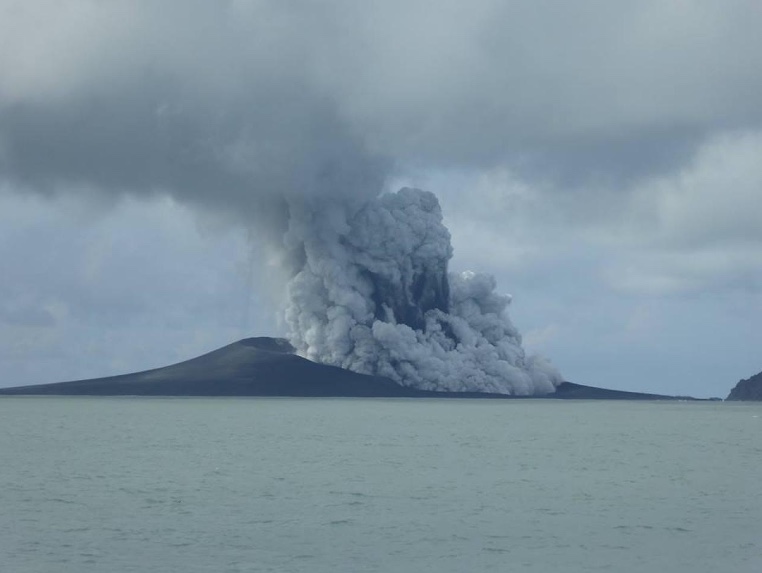The eruption of the submarine volcano Hunga-Tonga-Ha’apai took place on Sunday January, 15th 2022 at 17:15 local time (5:15 in Italy) in the South Pacific archipelago and was one of the most powerful recorded in decades in the area.
The Hunga Tonga – Hunga Ha’apai volcano is located in the Pacific Ocean in the Kingdom of Tonga about 65 km from the island where the capital Tonga is located and about 450 km from Fiji. It is a chain of islands located northeast of New Zealand, an area geologically set above a subduction zone of the Pacific plate below the Australian one.
Nasa claimed that the force of the eruption was 500 times stronger than that of the atomic bomb dropped by the United States on Hiroshima, Japan, at the end of World War II.
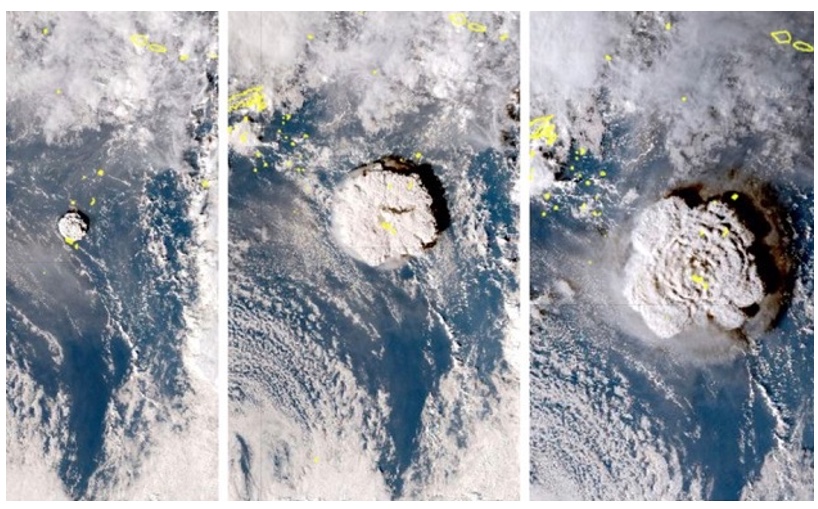
Tsunami waves unleashed by the eruption up to more than 10.000 km away reached the coasts of several countries bordering the Pacific, from the United States to Japan, Chile, Peru and Ecuador.
The volcano produced an eruption with a gigantic explosion, generating a cloud that extended over 30 km in height (stratosphere) and a shock wave that propagated across the planet, travelling
thousands of kilometers in spherical propagation (green lines in Figure 1 and link)
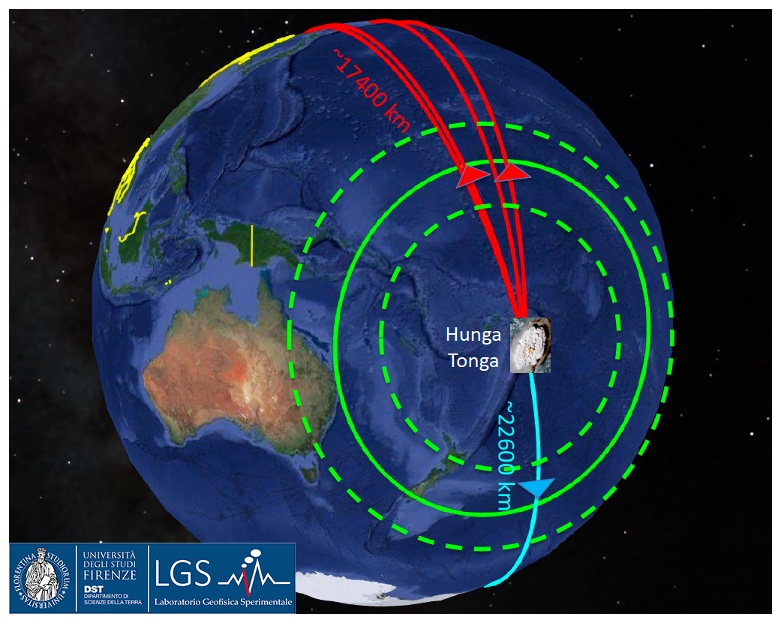
The phenomenon was observed by some geostationary satellites, whose sequential images show not only the enormous column of smoke produced, but also the displacement of dust and gas pushed by
the shock wave.
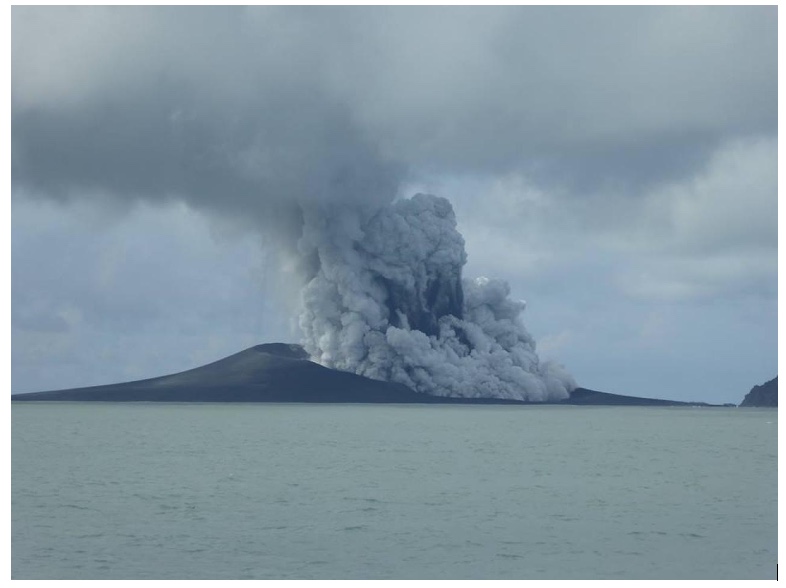
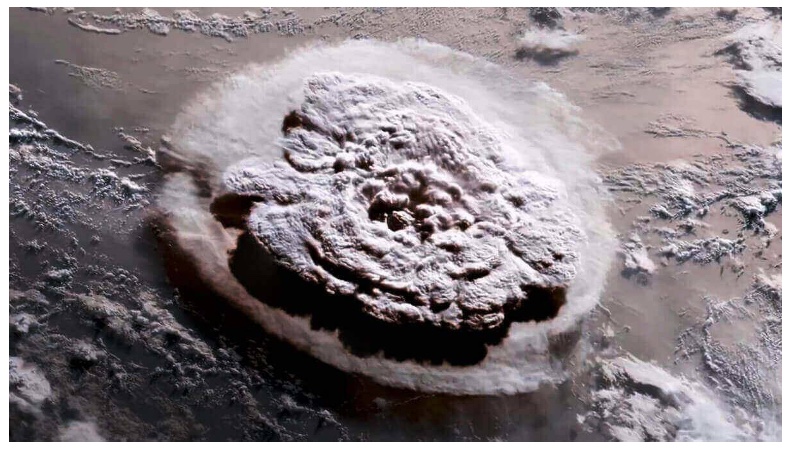
The extraordinary power of the volcanic eruption was immortalized by satellites and also the shock wave that, travelling at the speed of sound, travelled the entire globe. Numerous barometers reports from all over the world captured its passage, with a sudden rise followed by an equally sudden fall in pressure.
The explosion was so powerful that it was recorded in detection instruments around the world.
Laboratorio di Geofisica Sperimentale) of the Department of Earth Sciences of the University of Florence, as well as an infrasonic sensor of Lunitek, located in Sarzana, from 20:15 local time on January, 15th, began to record the shock waves produced by the volcano’s explosion (at a distance between 17300 and 17900 km from the eruption) with an average direction of origin of about 30°N (red lines in Figures 2 and 3). These first waves passed north of Russia near the Arctic Circle and have a very long period of about 5 minutes, at the limit of the physical properties of acoustic waves (blue lines in Figures 1 and 2).
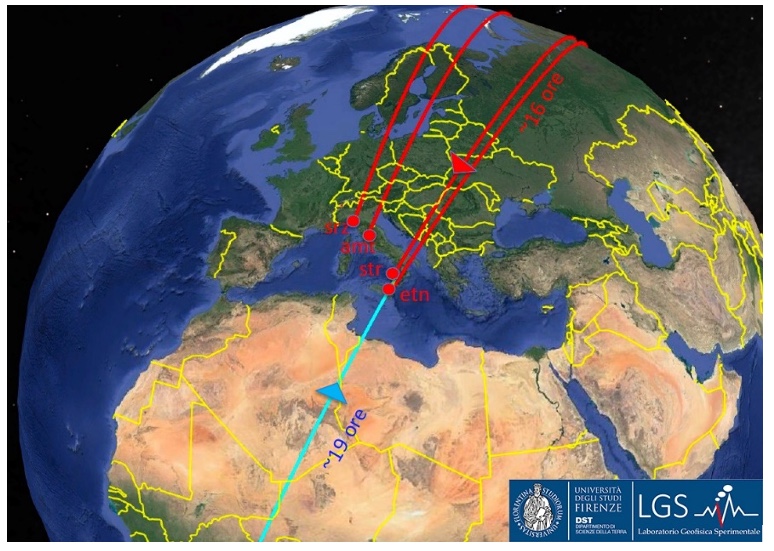
The waves were recorded about 19 hours after the eruption (blue line in Figures 1 and 2). They traveled in an opposite direction, covering a greater distance, about 22.600, and passing from the south to the Antarctic, with a direction of origin 210 ° S.
The difference in arrival times made it possible to calculate that both wave fronts propagated with a speed of about 310 m/s (about 1100 km/h), which is the apparent speed of sound propagation in the upper
atmosphere (Figure 3).
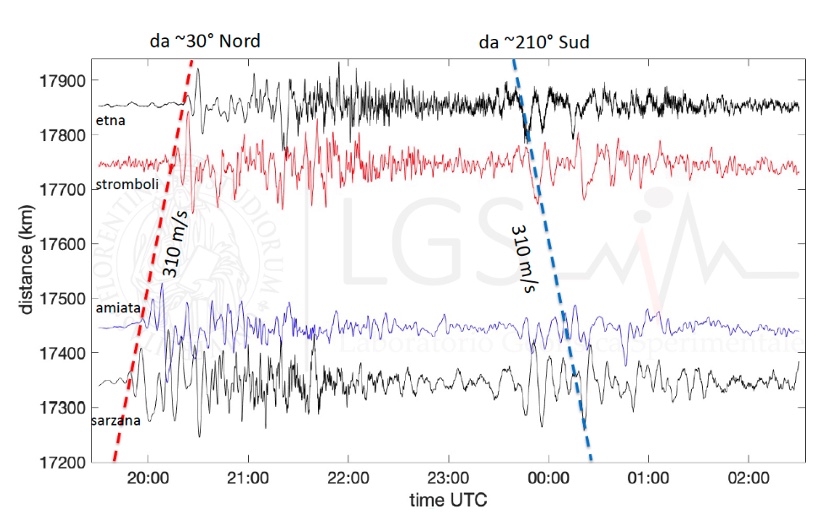
Lunitek Hermes infrasonic sensor
Infrasounds are low-frequency sound waves that are below the hearing threshold (20 Hz), little perturbations of atmospheric pressure which, due to the low atmospheric absorption of these low frequencies, can propagate for thousands of kilometers and be detected by pressure sensors..
The differential infrasonic sensor Hermes is based on differential pressure measurement and the use of an acoustic filter to eliminate the stationary component of atmospheric pressure. Pressure measurement is entrusted to industrial-grade electronic sensors, which combine high precision with high reliability and constant performance over time.
In addition to strong eruptions such as that of the Hunga-Tonga-Ha’apai submarine volcano on January, 15th 2022, there are many sources of infrasonic waves, most of them produced by natural phenomena such as
non-linear interactions between open ocean waves (microbaroms, which generate a signal at ~0.16 Hz recorded across the earth’s surface at any time), adverse weather conditions, outgassing and minor
volcanic explosions, rapid mass flows such as avalanches and landslides, earthquakes and associated ground shaking, storms, mountain waves. Effective anthropogenic sources of infrasound, on the other hand, are aircrafts, trains and disturbances generated by powerful explosions.
A range of sensors with different sensitivity, dynamics and frequency ranges are being industrialized by Lunitek, which are able to cover the amplitude and frequency ranges of most of the above mentioned infrasonic sources, thus enabling their effective monitoring.
The study of the infrasonic spectrum is often carried out using array techniques to improve the signal-to- noise ratio and locate sources. In such techniques, signals recorded by sensors placed at a known distance
are compared and processed and it is essential that the amplitude and phase response of the sensors be the same. Particular care was taken in the design of the Lunitek sensor in order to have products with identical characteristics and therefore immediately usable in arrays.
Below is shown the infrasonic signal produced by the eruption of the Hunga-Tonga-Ha’apai volcano and recorded in the Sarzana laboratories by the Lunitek Hermes 50 with high sensititvity (0.8V/Pa) and medium frequency range (0.03 – 200 Hz).
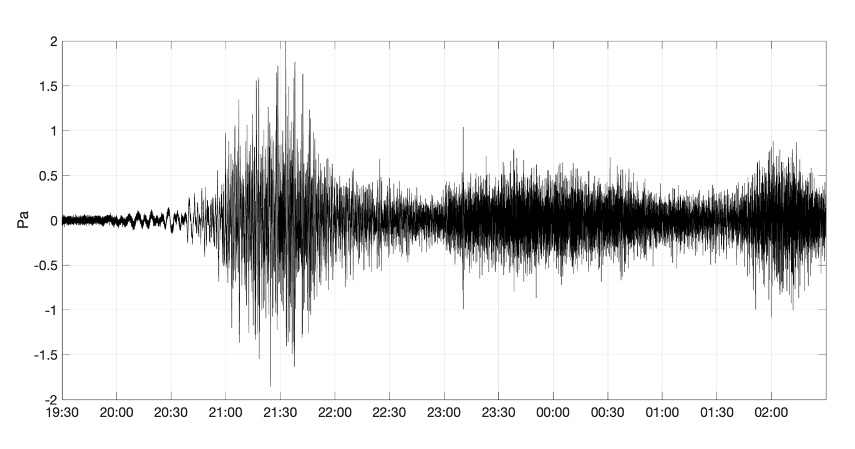
Bibliografia:
GECO S.r.l. , gennaio 2020, “Progetto di industrializzazione di Sensore Infrasonico”, LGS – Laboratorio Geofisica Sperimentale, 19 gennaio 2022, “L’eruzione del vulcano Hunga Tonga Ha’apai del 15 gennaio 2022 – aggiornamento con prima analisi dei dati”

